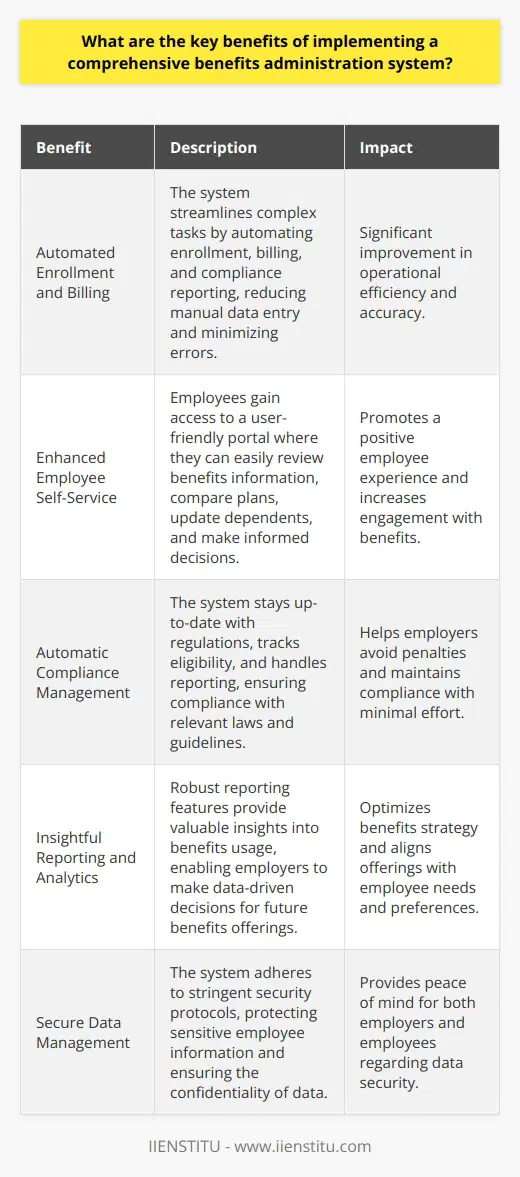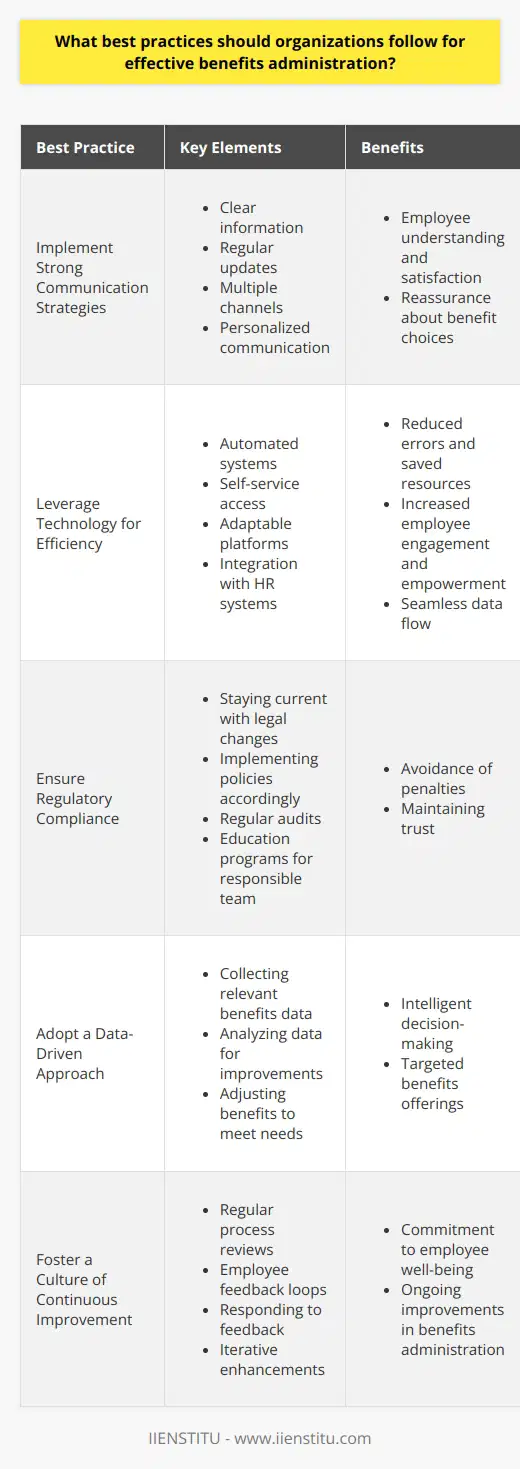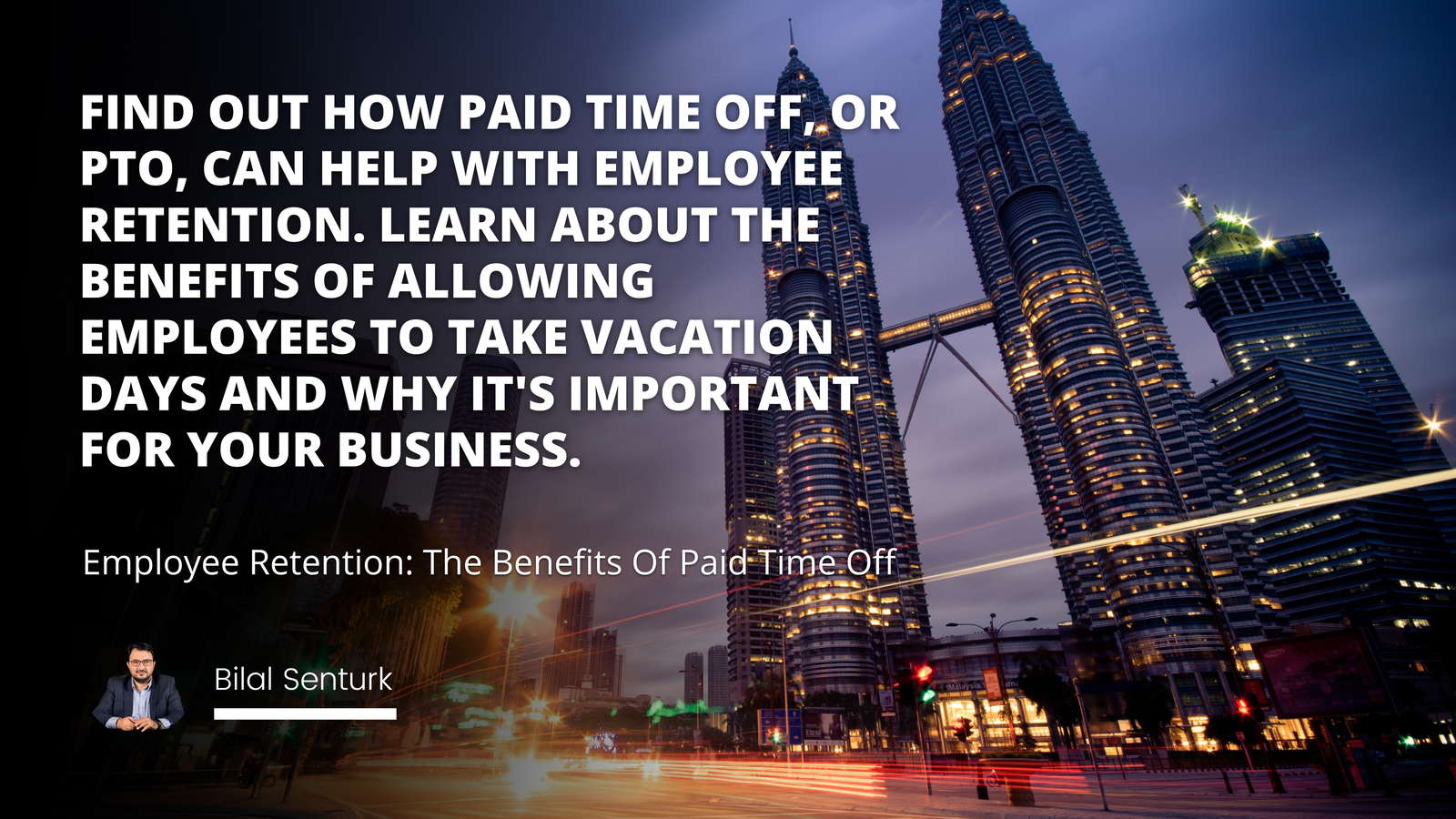
In the comprehensive landscape of human resource management, a pivotal role is often attributed to Benefits Administration, a domain that significantly affects both employee satisfaction and organizational efficiency. Effective Benefits Administration not only caters to the immediate welfare of employees but also establishes a foundation for long-term operational success. The fundamental purpose is to balance the strategic alignment of benefits with the needs of the workforce, while also ensuring adherence to regulatory standards and fiscal responsibility. An expert approach, marked by empathy and decisiveness, is critical to navigating the nuanced environment of employee benefits.
Understanding The Concept of Benefits Administration
The Significance of Benefits in an Organizational Setting
The motivation an employee feels towards their work and the organization can be considerably influenced by the benefits they receive. A comprehensive human resource management course often underscores that benefits are crucial, serving not just as a reward for employment but also as a reflection of the company's values and its investment in its human capital. Beyond health insurance and retirement plans, modern benefits can encompass a range of services, including wellness programs and flexible working conditions, collectively contributing to a more motivated workforce.
Furthermore, benefits play a critical role in staff retention. In an age where job hopping is commonplace, the quality and breadth of benefits offered can be a determining factor in an employee's decision to stay with an organization. This affirms the utility of benefits as tools of employee retention, crafting an environment that encourages longevity and reduces the costly turnover of staff.
Lastly, benefits administration should not be viewed in isolation but as a strategic component of the broader organizational ecosystem. Effective benefits have the potential to echo positively throughout the organization, acting as catalysts for enhanced morale and fostering a culture of care and commitment that permeates through the ranks of the workforce.
Roles and Responsibilities in Benefits Administration
At the core of Benefits Administration lies the thoughtful selection and design of benefit plans. Those charged with this task must balance fiscal constraints with employee needs, designing programs that are both cost-effective and responsive to the diverse requirements of the workforce. This demands a melding of analytical acuity and empathetic insight, ensuring that benefits are both desirable to employees and sustainable for the employer.
Another vital aspect centers on compliance with government regulations, a labyrinthine task that demands vigilant oversight and an acute understanding of legal mandates. Administrators must stay abreast of evolving laws and regulations to ensure that benefit offerings are not only competitive but also lawful. This highlights the importance of incorporating online courses into professional development, aiding administrators in staying updated and compliant.
Additionally, the effective communication of benefits to employees cannot be overstressed. Without clear and continuous dialogue, the best-crafted benefits package may fall short of its potential impact. The responsibility here includes not just the initial dissemination of information but also addressing ongoing queries and ensuring that employees are fully aware of the benefits available to them and how to access them.
Human Resources Job Description: Your Comprehensive Guide to HR Roles
Performance Appraisal: Evaluating Employee Effectiveness in the Workplace
Key Aspects of Benefits Administration
Essential elements of an effective Benefits Administration system
Inevitably, the discussion on the efficacy of Benefits Administration leads to the evaluation of its technical foundations. Automation and digitization emerge as pivotal factors, providing platforms that streamline enrollment, management, and reporting. This technological underpinning not only simplifies administrative tasks but also provides a database for analytical insights into usage trends and cost efficiency.
The facilitation of employee self-service platforms is another cornerstone, empowering employees to take charge of their benefit selections and modifications. This kind of empowerment enhances employee engagement with their benefits and provides a sense of autonomy, which is increasingly valued in the contemporary workforce.
Compliance management remains a non-negotiable element, requiring systems that effortlessly adapt to legislative changes, ensuring that the business remains on the right side of the law. This typically involves a set of tools within the benefits administration system that automatically update plan designs and employee communications, mitigating the risk of costly legal penalties.
Types of Employee Benefits
Diverse in nature, employee benefits broadly fall under categories such as health, retirement, and lifestyle. Health benefits continue to be the bedrock of the benefits package, often constituting the primary concern for employees when choosing an employer. This encompasses not just medical insurance but also dental, vision, and mental health service coverage.
Retirement benefits, although more future-oriented, weigh heavily in an employee's assessment of a company's benefits package. These include 401(k) plans, pensions, and other retirement savings programs that signal an employer's commitment to an employee's long-term well-being.
On the front of lifestyle benefits, progressive companies are introducing a range of perks that enhance the work-life balance—a dynamic work-from-home policy, gym memberships, childcare support, and more. These benefits echo a company that values its employees beyond their immediate work contributions, fostering a culture that supports their lifestyle aspirations.
The Positive Impact of a Well-Managed Benefits Administration
Advantages for employers
Benefits Administration, when executed with precision and strategic foresight, can significantly enhance an employer's reputation. It acts as a signal to the current and potential workforce of the company's commitment to its employees' health and happiness. Such a reputation can elevate a company's status in the job market, aiding significantly in the recruitment of top-quality talent.
Beyond reputation, the effects of a robust benefits strategy can reduce turnover rates, thereby curtailing the associated costs of hiring and training new employees. Furthermore, satisfaction with benefits is often directly linked to productivity as employees are more likely to be engaged and driven when they feel their employer has their best interests at heart.
Benefits for employees
For the individual employee, comprehensive Benefits Administration can lead to enhanced job satisfaction. Knowing that one's employer offers a safety net through various benefits instils a sense of security and appreciation, contributing to a more engaged and loyal workforce.
Additionally, such benefits can considerably enrich an employee's work-life balance. Access to flexibility in work hours, telecommuting options, and other supports can reduce stress and burnout, contributing to a healthier and more productive life both inside and outside of the workplace.
Challenges in Benefits Administration
Common obstacles in managing an effective Benefits Administration
Benefits Administration is not without its hurdles, with compliance-related issues often at the forefront. The complex network of federal, state, and local regulations can present a daunting challenge for any HR professional, requiring constant vigilance and adaptability.
Administrative costs also pose a significant challenge, as organizations must reconcile the desire to provide comprehensive benefits with the need for cost management. Each benefit offering carries its own set of financial implications, and crafting a package that aligns with both employee desires and company budgetary constraints calls for a delicate balancing act.
Solutions to address these challenges
One way to address these challenges is through the use of sophisticated Benefits Administration Platforms that provide automated updates and compliance checks. Such systems can offer significant relief by handling much of the regulatory legwork and helping avoid penalties for non-compliance.
For companies that may not have the internal expertise or resources, outsourcing to third-party specialists can offer a viable solution. These specialists bring the benefit of dedicated expertise and can assume responsibility for staying current with legal requirements and administrative practices, ensuring the company's benefits program operates smoothly and efficiently.
In sum, the field of Benefits Administration is multifaceted, with each facet carrying implications for both the employer and the employee. Implementing and managing a comprehensive benefits package requires not only a knowledgeable and proactive approach but also empathy and foresight. As businesses continue to evolve, so too will the practices and processes of Benefits Administration, with the promise of enhanced technology, changing workforce demographics, and shifting societal values driving new trends and challenges. It is in this dynamic and ever-shifting landscape that Benefits Administration will continue to hold significant import within human resource management.
Frequently Asked Questions
What are the key benefits of implementing a comprehensive benefits administration system?
Enhancing Efficiency in Operations
Comprehensive benefits administration systems streamline complex tasks. They automate enrollment, billing, and compliance reporting. These systems reduce manual data entry. This minimizes errors significantly. Efficiency, therefore, improves drastically.
Improved Employee Experience
Employees gain a user-friendly portal. They access benefits information easily. The system supports them in their choices. They can compare plans, review coverage, and update dependents. This promotes a positive experience.
Increased Compliance
Benefits administration must comply with regulations. Systems manage this by updating automatically. They track eligibility and handle reporting. Employers thus avoid penalties.
Data-Driven Decision Making
Robust reporting features offer valuable insights. Employers understand benefits usage better. This guides future benefits offerings.
Cost Reduction
Automation leads to cost savings. It reduces the need for specialized staff. It cuts down on administrative errors. Overall administrative costs diminish.
Attracting and Retaining Talent
A streamlined benefits package attracts applicants. It aids in talent retention. Systems display this value effectively.
Simplified Communication
Systems provide important updates directly. Clarity in benefits communication improves. Employees stay informed about their benefits.
Scalability
As organizations grow, their needs evolve. Benefits systems adapt with them. This supports business expansion without added complexity.
Security of Sensitive Data
These systems ensure data security. They adhere to stringent security protocols. This protects sensitive employee information.
A comprehensive benefits administration system offers key advantages. It improves efficiency, compliance, and decision-making. Employees experience greater satisfaction. Cost savings and security of data stand out. Such systems support current and future business needs. They represent a smart investment for organizations.

What best practices should organizations follow for effective benefits administration?
Understanding Best Practices in Benefits Administration
Benefits administration often involves complex tasks. It requires efficient strategies for optimal results. Organizations must prioritize effective implementation. This ensures employee satisfaction and regulatory compliance.
Implement Strong Communication Strategies
Communication holds the key to successful benefits administration. Employees need clear information. They should understand available benefits and usage. Regular updates about benefits packages are critical. Use multiple channels to convey messages. This can include emails, newsletters, and meetings. Personalized communication enhances the experience. It reassures employees about their choices.
Leverage Technology for Efficiency
Technology streamlines benefits administration. Automated systems reduce manual errors. They save time and resources. Employees gain self-service access. This increases engagement and empowerment. Organizations must choose adaptable platforms. These should meet current and future needs. Integration with existing HR systems is crucial. It ensures seamless data flow.
Ensure Regulatory Compliance
Compliance with regulations is mandatory. Non-compliance results in penalties and lost trust. Organizations must stay abreast of legal changes. They should implement policies accordingly. Regular audits help maintain compliance. Education programs for the team responsible are necessary.
Adopt a Data-Driven Approach
Data drives intelligent decision-making. Employers should collect relevant benefits data. This includes utilization rates and employee feedback. Analyze this data to improve offerings. Adjust benefits to meet changing needs. Data-backed decisions lead to more targeted benefits.
Foster a Culture of Continuous Improvement
Continuous improvement is essential. Employers should regularly review processes. Feedback loops from employees offer valuable insights. Businesses must respond to such feedback. This shows commitment to employee well-being. It also leads to iterative enhancements in benefits administration.
Streamline Enrollment Processes
Enrollment can be challenging for employees. Streamlining is therefore important. Offer clear instructions and support. Make enrollment periods convenient. Provide decision support tools. These help employees select suitable plans. Simplified processes improve overall satisfaction.
Provide Training and Support
Support spans beyond the enrollment period. Ongoing training and support are necessary. Employees must know how to access and use their benefits. Offer training sessions and detailed documentation. Provide dedicated support personnel. This ensures questions and concerns receive prompt attention.
Key Takeaways
- Communicate effectively and regularly.
- Use technology to simplify processes.
- Uphold strict regulatory compliance.
- Make decisions based on data.
- Embrace continuous improvement.
- Make enrollment user-friendly.
- Offer comprehensive support and training.
Effective benefits administration is attainable. Follow these best practices rigorously. This leads to a positive impact on employee morale and business health. Organizations that excel in benefits administration often see increased retention. They also enjoy a reputation as employers of choice.

How does a well-managed benefits administration contribute to employee engagement and satisfaction?
A Critical Interface
Employee engagement and satisfaction depend greatly on benefits management. Stellar benefits administration signifies respect and investment in the workforce. The direct outcomes include increased morale, reduced turnover, and heightened loyalty. These reflect deeper commitments to employee well-being.
Benefits Visibility
Transparent benefits administration enhances trust. Employees understand their compensation package better. This clarity fosters a sense of fairness. It bolsters employees' perception of organizational integrity.
Streamlined Processes
Simplified claims and updates ensure efficiency. Employees value ease of access. There's less frustration. People can focus more on their core job functions.
Foster a Supportive Culture
Benefits often epitomize corporate care. Thus, they embody an organization’s culture. Efficient benefits management communicates care. Employees feel valued. They perceive their employer as supportive.
Recruitment and Retention
Attractive benefits lure top talent. Effective administration maintains their satisfaction. This approach aids both acquisition and retention.
Encourage Engagement
Employees with good benefits feel recognized. Such acknowledgment motivates greater engagement. Engaged employees are often more productive.
Address Diverse Needs
A well-managed system accommodates diversity in the workforce. It can adapt to individual circumstances. Flexibility is key. It acknowledges unique employee needs.
Increase Communication
Consistent communication is critical. Employees stay informed about their benefits. This knowledge builds a connected workforce.
Simplify Decision-Making
Clear, accessible information guides employees. They make informed choices about their benefits. Simplicity aids understanding.
Promote Wellness
Physical and mental wellness impact job satisfaction. Comprehensive benefits address these aspects. Well-managed benefits support overall wellness initiatives.
Impact of Technology
Leverage technology for streamlined benefits administration. It allows for tailored experiences. Employees engage with their benefits with ease.
A well-managed benefits administration is fundamental. It directly affects employee engagement. Consequently, it influences their satisfaction. It warrants ongoing attention for a thriving workforce.



